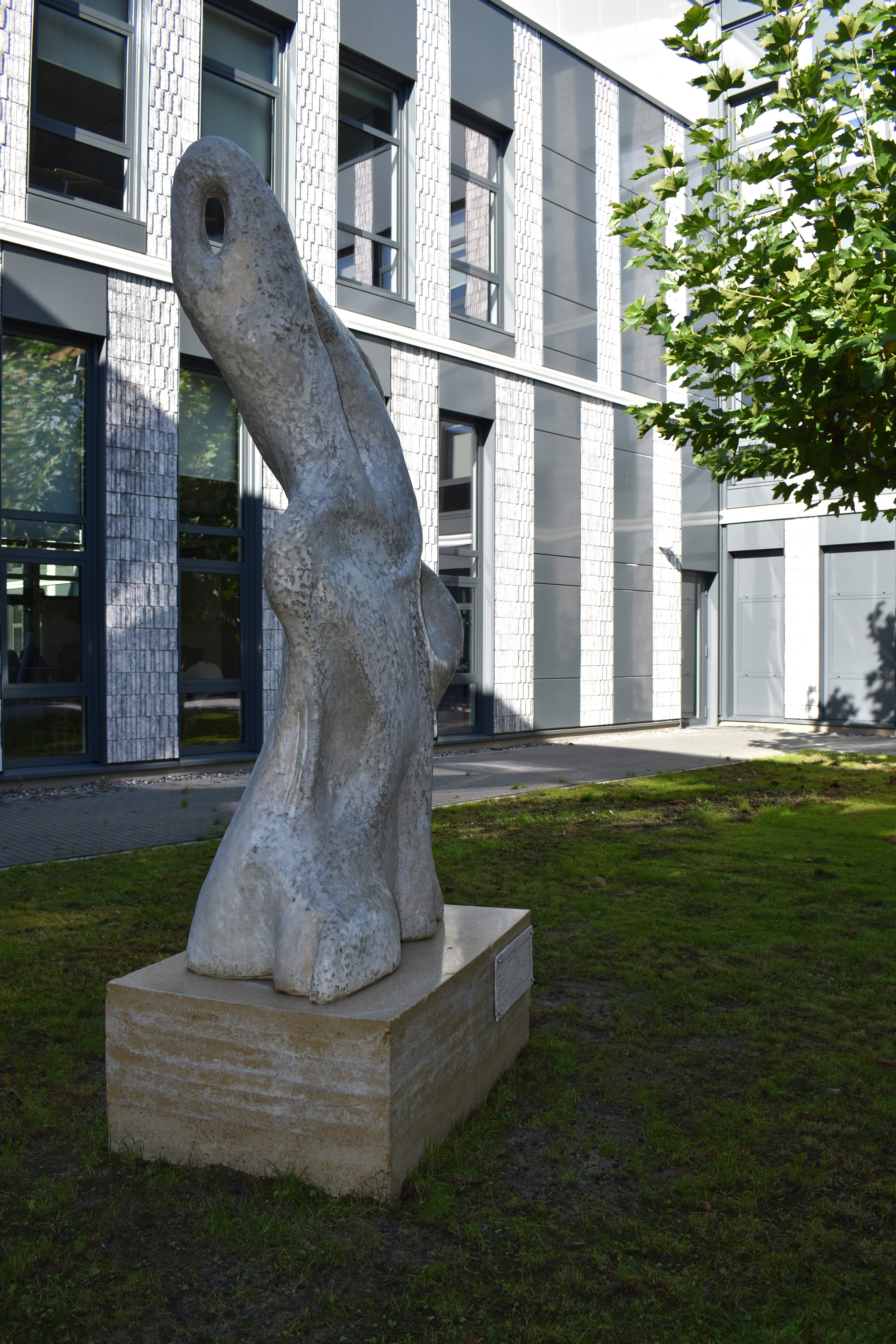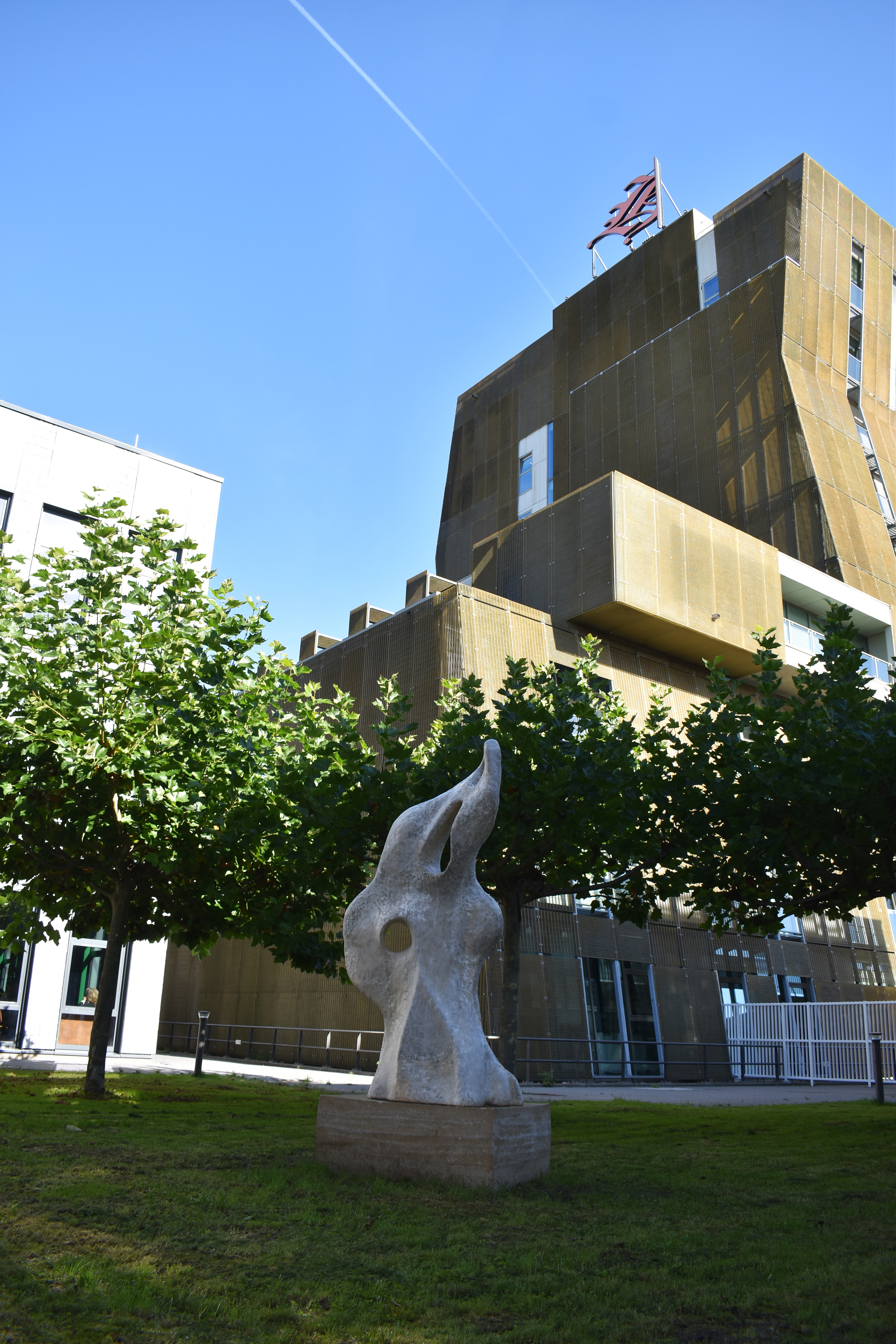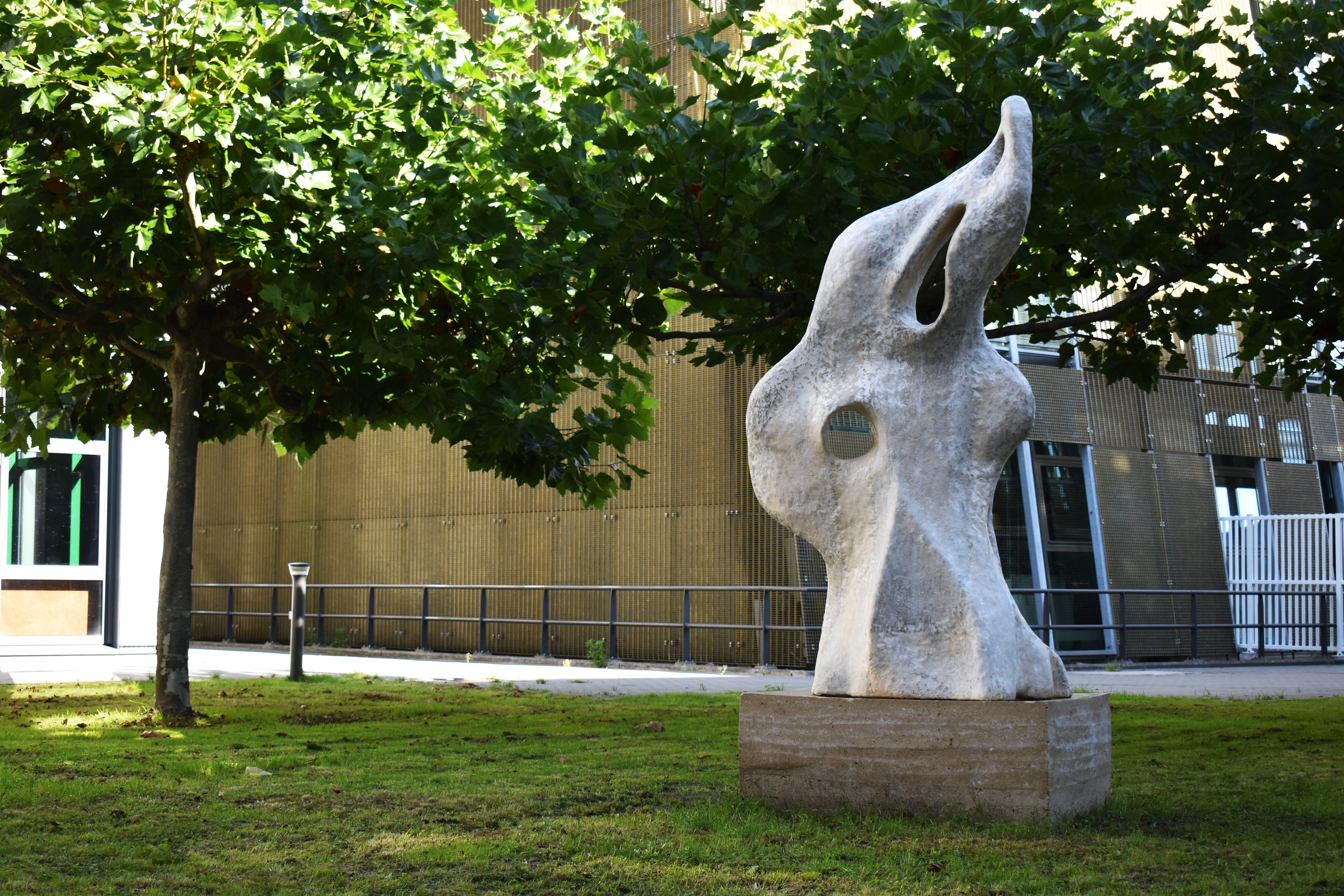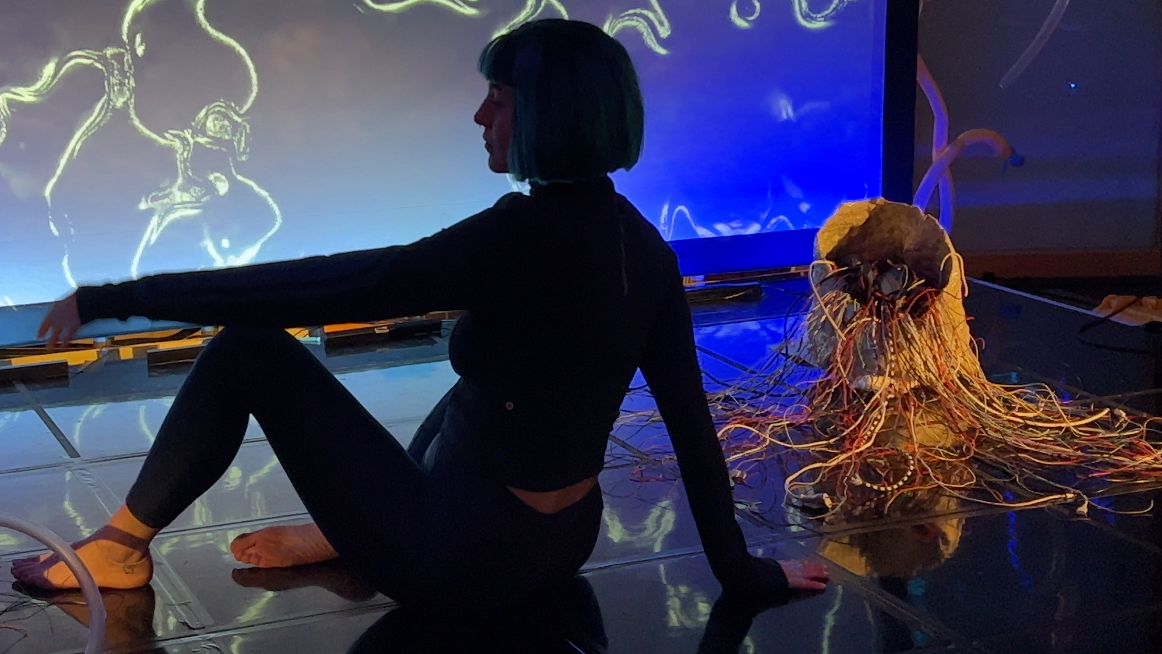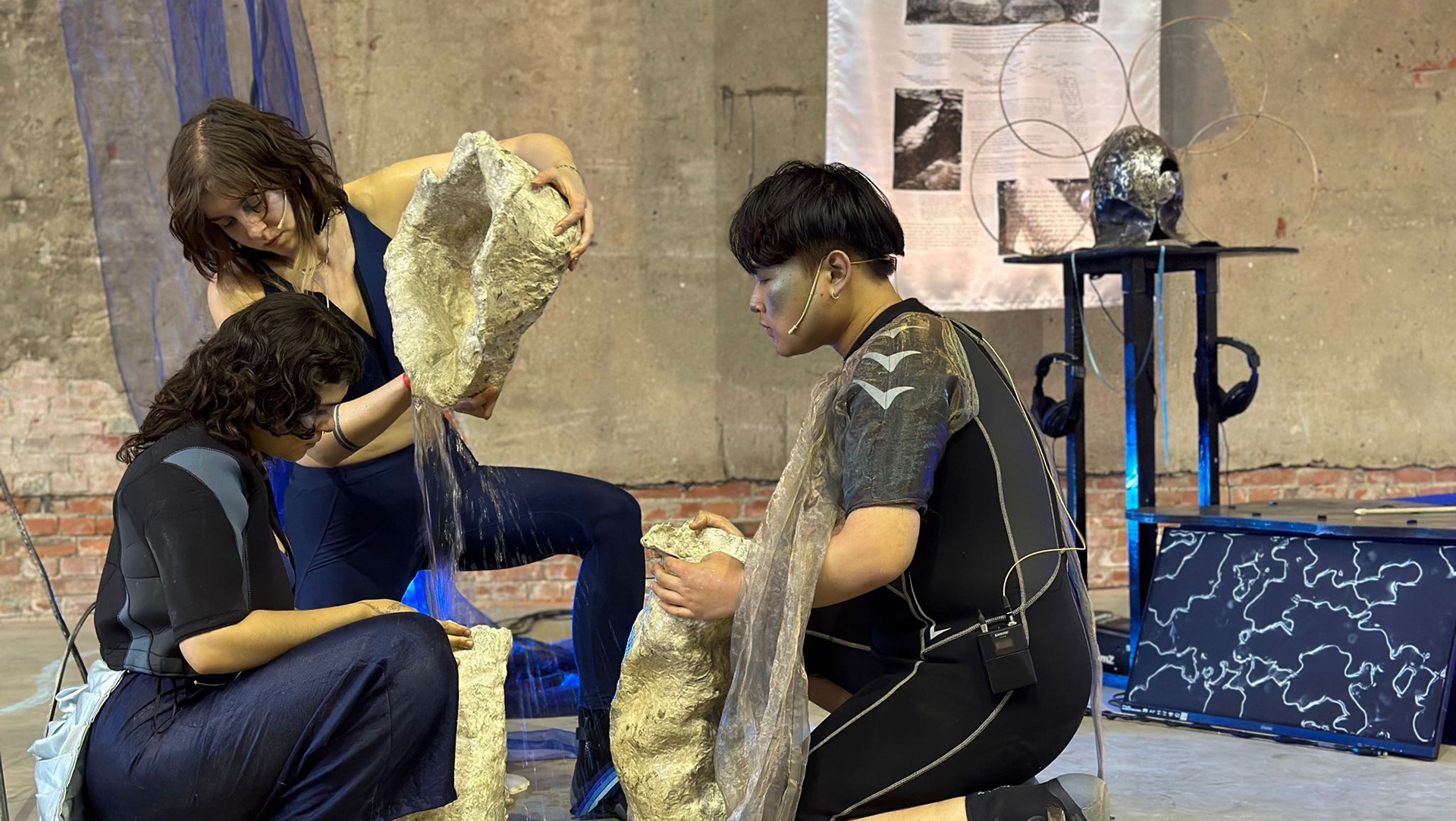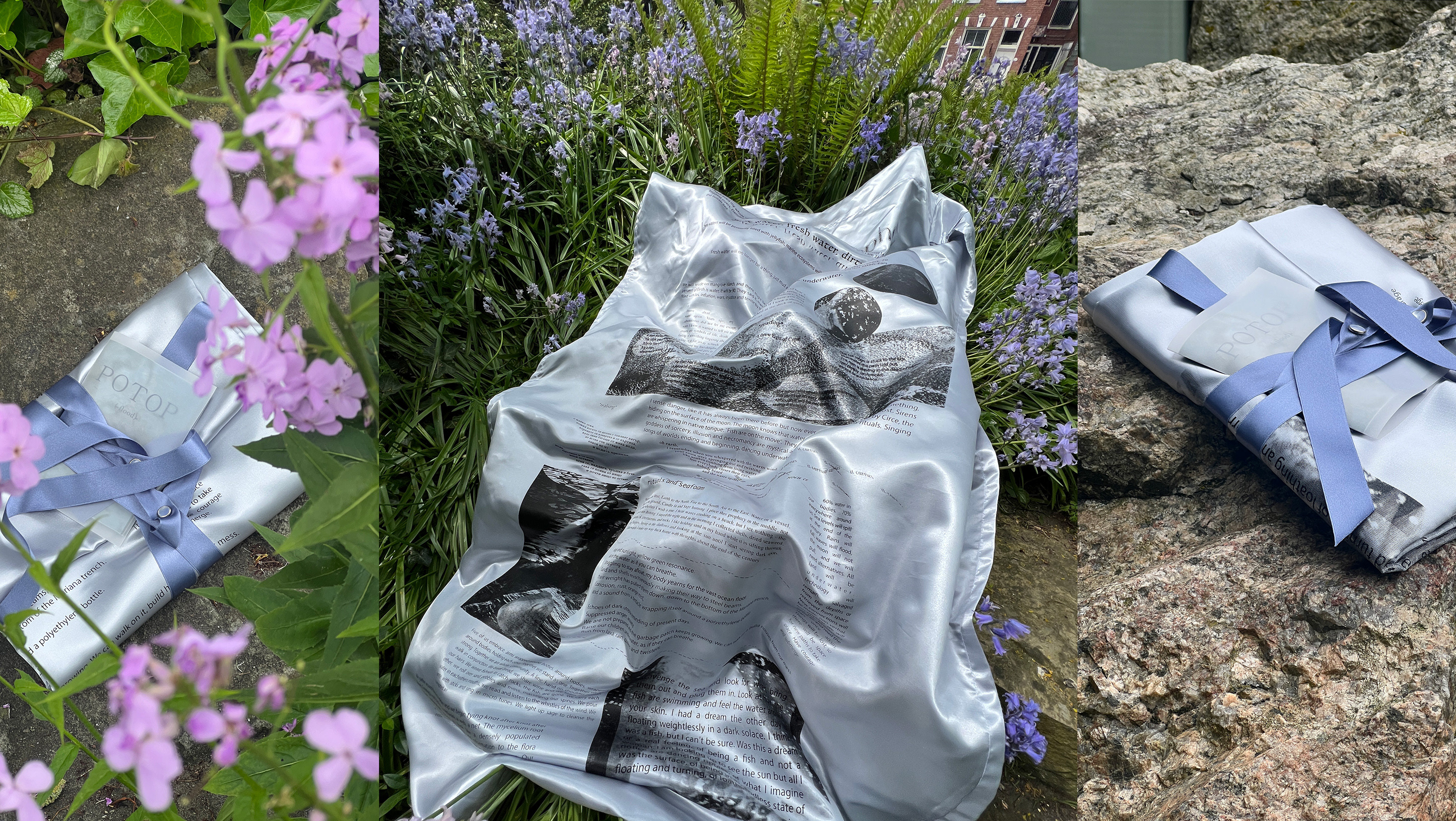Hanzehogeschool Groningen Public Sculpture Commission
Mycelium is the root structure of fungi, and it has proven to be an amazing biomaterial with an incredibly small carbon footprint, as well as biodegradable, sustainable, fire-resistant, moldable, and truly fascinating.
𓍊𓋼𓍊𓋼𓍊
In the summer of 2021, I was granted a commission to create a public sculpture for the Hanzehogeschool, University of Applied Sciences in Groningen. During this time, I was researching the properties and applications of mycelium in daily life and ultimately decided to utilize the material in the creation of the sculpture. To obtain a sufficient quantity of materials for the project, I contacted a third-party company, "GrownBio" who helped me by providing me with panels of mycelium, grown together with hemp.
The concept for the work was developed through a collaborative process with a dance school associated with the Hanzehogeschool. Following multiple visits to dance rehearsals and the creation of numerous sketches and photographs, I was able to develop several ideas that eventually led up to the final shape of the sculpture. Throughout the sculpting process, I left room for intuition and playfulness to play a role in shaping the final product. As I was working with a completely new material, I allowed it to guide me.
Following the completion of the final form of the sculpture, I faced a new challenge: making it waterproof. I began researching other sustainable biomaterials and ultimately discovered magnesium oxychloride, or so-called, sorel cement - an eco-friendly version of traditional cement with water-repellent properties. While it took a year to complete the commission, I gained invaluable experience working with two materials that were entirely new to me.
The resulting work, titled “Unpredictable Encounters Transform Us; We Are Not in Control, Even of Ourselves,” is a material research project that explores ideas related to decay, transformation, organic movement, and our connection with nature and community. The sculpture is biodegradable, therefore the materials will begin to weaken over time. The expected lifespan of the work is approximately five years, but given the limited resources available for working with these materials, it could prove to be either shorter or longer.
𓍊𓋼𓍊𓋼𓍊
The work is on public grounds and can be visited on work days at location Hanzeplein 7, 9713 GZ, Groningen.


